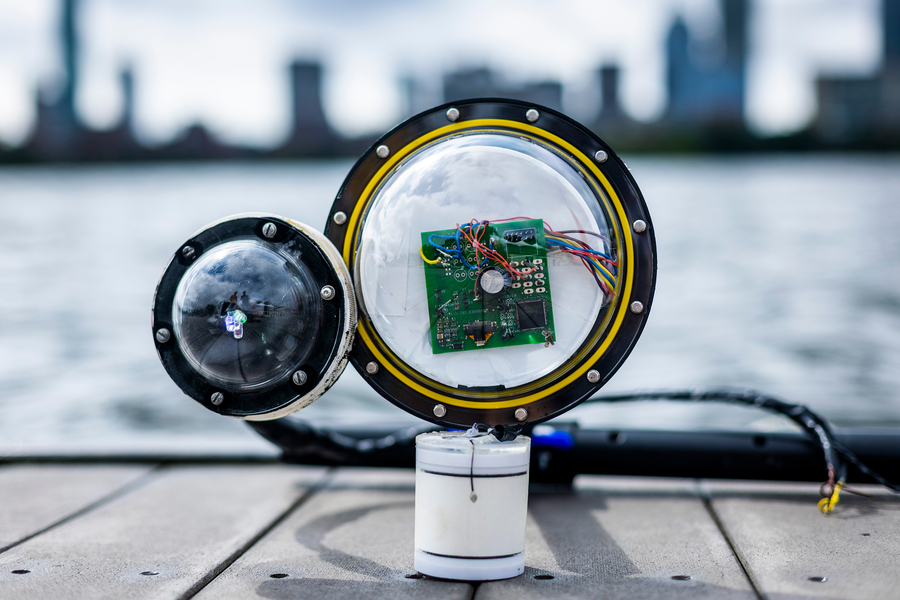MIT has developed a sound-powered underwater camera
The battery-free underwater camera will help monitor climate change, explore the unknown and track pollution levels

Researchers at the Massachusetts Institute of Technology (MIT) have developed a battery-free, wireless underwater camera that could be used to monitor the effects of climate change, explore the unknown and track pollution levels.
The ocean makes up around 70% of the Earth's surface and yet, we seem to know more about the Moon and Mars than the ocean floor. In fact, 95% of the ocean still remains unexplored, due to the incredible depths it reaches and the advanced technology needed to study it.
• These are the best waterproof cameras
At the deepest point in the ocean, known as the Mariana Trench, you could fit the whole of Mount Everest underwater and still have a mile of sea above it – which gives you some idea of how vast the ocean really is.
The camera is able to take color photos, even in dark underwater environments and images can be wirelessly transmitted through the water which means exploration missions could last weeks and be able to cover more ground than ever before.
One of the challenges of deep-sea exploration is the cost - it’s expensive to power underwater cameras for long periods of time as you need some sort of vessel to charge the batteries. This new camera from MIT is powered by sound from the ocean waves and converts it into electrical energy to power the imaging and communications equipment.
“One of the most exciting applications of this camera for me personally is in the context of climate monitoring," said Fadel Adib, an associate professor at the Department of Electrical Engineering and Computer Science, and director of the Signal Kinetics group at MIT.
The best camera deals, reviews, product advice, and unmissable photography news, direct to your inbox!
"We are building climate models, but we are missing data from over 95% of the ocean. This technology could help us build more accurate climate models and better understand how climate change impacts the underwater world."
In order to create a battery-free camera, scientists had to find a way that the camera could use its surroundings to generate electricity. They came up with the idea of using sound, and fitted the device with piezoelectric materials that produce an electric signal when a mechanical force is applied. When sound waves generated from passing ships or marine life are detected, they hit the transducers causing them to vibrate and convert the mechanical energy into electrical energy – clever!
Not only can the energy generated from sound be used to control the device and capture photos, it's also used to transmit data. By converting the images to bits (1s and 2s) they are able to be sent one at a time to a receiver. "The receiver transmits sound waves through the water to the camera, which acts as a mirror to reflect those waves," explains MIT.
"The camera either reflects a wave back to the receiver or changes its mirror to an absorber so that it does not reflect back." The process is known as underwater backscatter and has been successfully trialed in several underwater environments.
With a working prototype developed, researchers are now looking into ways of making it even better by being able to record video, stream images in real-time and increase the range of the receiver. With sea levels rising and heating at a scary rate, there has never been a more important time to monitor the effects of climate change. Hopefully, devices like this will become available to more and more people, businesses and charities who are dedicated to preserving our seas, oceans and the wildlife inhabiting them.

Having studied Journalism and Public Relations at the University of the West of England Hannah developed a love for photography through a module on photojournalism. She specializes in Portrait, Fashion and lifestyle photography but has more recently branched out in the world of stylized product photography. Hannah spent three years working at Wex Photo Video as a Senior Sales Assistant, using her experience and knowledge of cameras to help people buy the equipment that is right for them. With eight years experience working with studio lighting, Hannah has run many successful workshops teaching people how to use different lighting setups.

